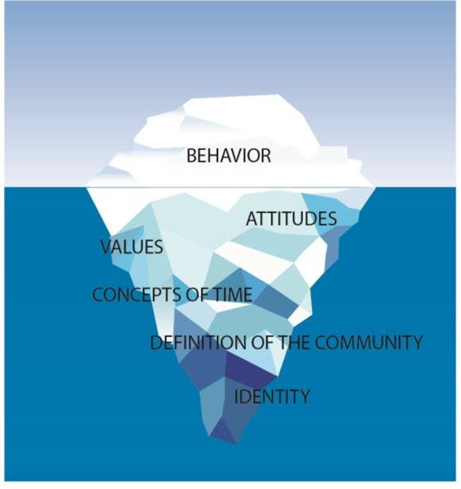
Creating value together!
Although it is often said that motivation is a matter entirely linked to the individual and his personality, research from the Science of Team Science tells us that
- the exposure of the team to strong imperatives or business needs (for example induced by serious crises or heavy reorganizations),
- the messages transmitted by the proximity or direct listening to leadership figures, but also
- social interaction, the exchange of perspectives and the formation of a collective opinion: all these interactions contribute to the formation of a homogeneous climate in the teams (to be honest, this is true, more generally, also in organizations … ).
Each of us has experienced, in our professional life, the fact that the corporate climate seems to be determined by performance, which, in turn, determines our and colleagues’ satisfaction and motivation. Here, too, Team Science offers us a deeper perspective. It is the effectiveness of the relational exchange between the leader and the team members that determines the depth of alignment between the team itself and the needs transmitted by the leader or the company: the emergence of a climate of consensus depends a lot on this. Even better: it is precisely the duration and intensity of social interactions that affects the formation of a climate of consensus: networks of individuals with frequent informal interactions are more likely to create a climate of consensus and therefore a sense of cohesion.
Here, then, is an important recipe for our team: a collective climate that intercepts the strategic imperatives and the main mission of an organization, adequately transmitted by the leadership and conveyed by an appropriate social interaction, becomes a cognitive structure which, in turn, it shapes many processes that are decisive for the achievement and achievement of objectives
Without going too far: a team has a goal, shares a vision of how it will get there and makes it grow until the result is brought home: after all it is a question of acting.
In #ilteamgiusto, with @Paolo Chinetti, we say that action has its great elements of amplification in spontaneity and coherence. Also for the purpose of the “propagation” of the vision, an intense coherence between affirmations and behaviors constitutes a powerful element of inspiration. Creating a rift between actions and statements is often a source of immediate disconnect between team members or between the team and stakeholders.
A vision is inextricably linked to the mission (which in the case of the team is the goal to be achieved) and to a variation of values, which make it explicit and shareable. The values can be more methodological or more abstract, but their declination helps to better frame the mission and define what we are willing not to negotiate (in adapting the vision) to achieve it, and vice versa. Through the declaration of values, the team describes itself, and that is why they cannot be ‘the values of the boss’ and, again through them, the team filters their way of adapting by setting limits that can be crossed or not.
Self-efficacy is the evaluation that a team member gives of his or her ability to achieve a particular level of performance in pursuit of a goal. When individuals focus on achieving goals, they monitor their progress through feedback they receive from teammates and re-adjust their behavior based on discrepancies between current performance and target set. As they see progress, the perception of their self-efficacy grows. Self-efficacy is important because it leads to consciously setting higher level goals when the previous ones are achieved and, at the same time, it intensifies perseverance when the goals are difficult and challenging and favors adaptation when the complexity of the task increases.
Group or collective effectiveness, on the other hand, can be defined as the conviction shared by the team of the collective capacity of a group to organize and carry out actions aimed at producing levels of achievement of the established objectives. As often happens in social and biological systems, this is not a simple sum of the group members’ self-efficacy. When interdependence is low, team members essentially contribute as individuals (for example, a sales team where team performance is the sum of individual sales), but when interdependence is high, team members they are more likely to share goals, commitment, strategy, and collective effectiveness reaches a level higher than the sum of individuals.
Therefore, we can also say that the orientation to the objectives of a team can be considered an emerging state rather than a composition characteristic (therefore obtainable with training). In fact, theory and research suggest that team effectiveness can be increased as much by the action of leaders, who can shape team experiences and interactions, as by different specific forms of team training.
A key role of leaders in these contexts is to create experiences and events that make the team collectively aware of the outcome of checks / verifications and feedback, as well as collectively it is appropriate to create moments of collecting positive feedback and celebrating successes, at the in order to give team members the opportunity to increase their self-efficacy, and thus shift the members’ attention towards team effort. In one sentence: The leader acts by modeling collective experiences so that the team can increase their collective effectiveness.
But how are the team’s values made explicit? @Amy Edmondson tells us in his beautiful book Teaming.
- Typically, at the beginning of a project during team meetings (but also in the first one-to-one meetings) we identify that particular set of ideals, principles and beliefs that are as much as possible linked to the reason and the way in which the team should pursue the goals. This enunciation of the collective has a strong effect of conveying messages of cohesion. Or, you can be inspired by the history of your organization or even by the action of pre-existing or coexisting teams.
- With continuity, during the course of the project, the vision of the team evolves or simply the details of the vision develop better. Here, as the skills of teammates are outlined and confirmed, new interpretations and new sensitivities are brought into focus. This evolution of vision must be encouraged because it allows different experiences to express themselves and therefore the values expressed to better represent the team.
- The leadership of the team must, with the same continuity, ensure the explicit enunciation, articulation and implementation of the vision, which must be as engaging as possible.
I take up this last point because it allows us to reiterate an important aspect. Team leadership must take the time to articulate the challenge that the group will have and must face; in particular, it must aim to gradually clarify the general objective and the constraints that the group has to be successful, but also to encourage project participants to consider their work as unique, unusual and fun. A team doesn’t need passengers, it needs drivers, says Edmondson!



